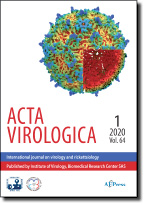Acta Virologica Vol.61, No.3, p.231-239, 2017
|
| Title: Viral vaccine stabilizers: status and trends |
| Author: F. M. C. CARDOSO, D. PETROVAJOVÁ, T. HORŇÁKOVÁ |
|
Abstract: Vaccine stability is a key factor to preserve vaccine potency and efficiency, as its potency decays over time and during temperature changes. The choice of stabilizers for viral vaccine formulation depends mainly on the vaccine type. More specifically, the choice is determined by the properties and structure of the active pharmaceutical ingredient or viral antigen(s) in the vaccine. In this review, we analyze key formulation components in different vaccine types. We discuss some of the major driving forces in the improvement of vaccine thermostability: increasing demand for cost-effective production of thermostable vaccine with lower dependency on cold chain, stricter regulatory policies for animal-origin materials, and the return of the research investment from the industry point of view. Moreover, we provide an overview of existing licensed viral vaccine types, including their production platform, presentation, delivery route, known stabilizers content and available thermostability data. In addition, we compare the data of licensed vaccines to published experimental vaccines, in order to discuss the current trends in vaccine stabilizers development.
|
|
| Keywords: vaccines; viruses; stabilizers; thermostability; protein components; formulation |
|
|
Published online: 28-Aug-2017
|
| Year: 2017, Volume: 61, Issue: 3 |
Page From: 231, Page To: 239 |
doi:10.4149/av_2017_301
|
|
 download file download file |
|
|
|
|
 download file
download file
